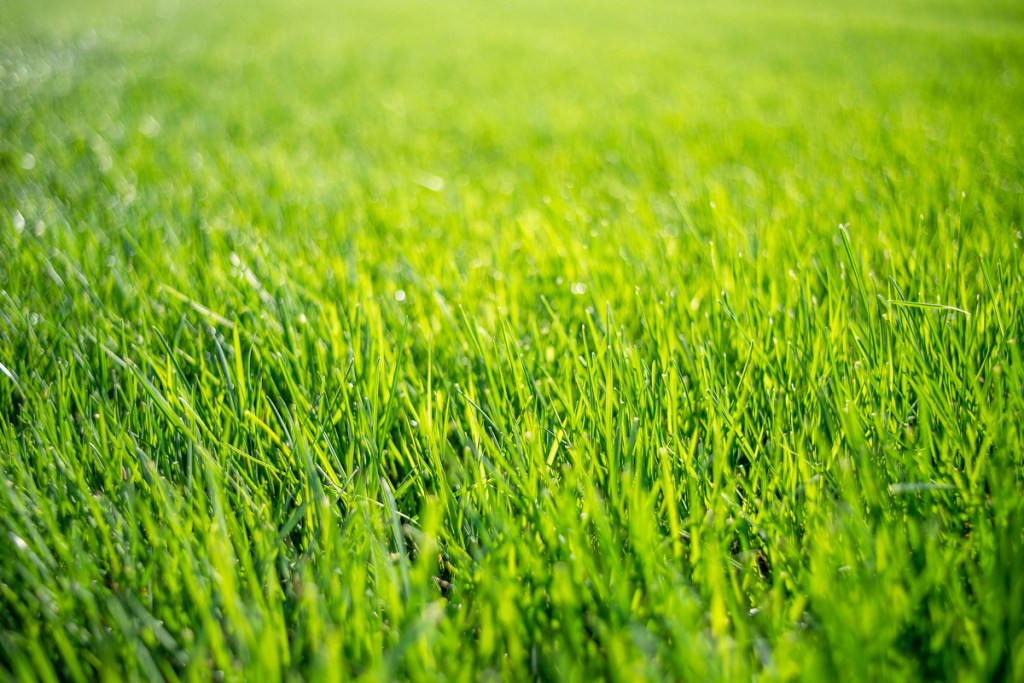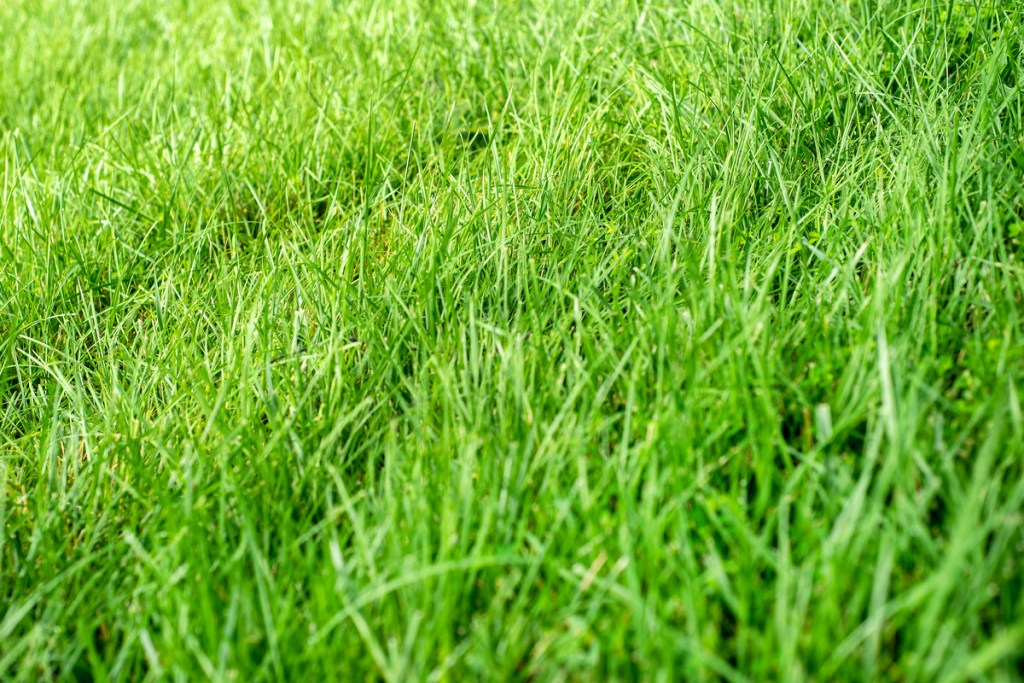If you aren’t passionate about grass, then telling one variety from another might be difficult. From a distance, most varieties look fairly similar, with the exception of some ornamental grasses. Not all grass varieties have the same care requirements though, and similar-looking varieties can have vastly different rates of success in your yard. If you’re trying to find the best grass variety for your lawn, then you may want to consider tall fescue. Not sure what makes tall fescue a good choice or want to know how to take care of it? We’ve got everything you need to know in this handy guide to tall fescue.
What is tall fescue?
Tall fescue is a variety of fescue grass with wide blades and a nice deep green color. It’s a cool-weather perennial, which means it prefers cooler weather over hot weather. In southern regions, it can dry out, become damaged, or die back during summer. However, as a perennial, most of it will return when the weather begins to cool off again.
Tall fescue is a bunching grass as opposed to a sod-type grass. Sod grasses spread through rhizomes or shoots, from their roots, either above or below ground. Bunching grasses, such as tall fescue, grow in clumps and spread as more grass grows at the edges of the clump. This means it spreads quickly but is easy to contain. If you’ve ever had an issue with grass spreading into your garden bed, then tall fescue is worth looking into.
True to its name, tall fescue can get quite tall. It grows quickly and evenly, putting on an inch or more weekly during spring and fall. The seeds germinate quickly, typically between 4 and 14 days, and the root system can extend 2 to 3 feet deep. This makes tall fescue easy to establish and quite hardy.

What kind of maintenance does tall fescue require?
As you might imagine from a grass that grows so quickly, tall fescue needs regular mowing during spring and fall. In summer, when tall fescue slows its growth and is more likely to die back, however, it needs less frequent mowing. Aside from mowing, tall fescue needs little care. Its deep roots give it access to water and nutrients far underground. Due to this, it only needs watering or fertilizing during droughts or in exceptionally poor soil.
Since tall fescue is vulnerable to damage, it needs occasional reseeding in the fall. Depending on how much damage it sustains, you may need to reseed heavily, or you might only need to make a few touch-ups. If left alone, it’ll spread back out, but it’s typically faster to reseed.

Comparing tall fescue to other cool-weather perennial grasses
To begin, how does tall fescue compare to other fescue varieties? Its most common counterpart is fine fescue, which is actually a border category consisting of several fescue varieties, such as creeping red fescue and hard fescue. Fine fescue varieties have narrower leaves and are less tolerant to heat than tall fescue. This is partly because of the deep roots of tall fescue, which give it an extra water source. Another popular fescue variety is blue fescue. Blue fescue is an ornamental grass, and it is, as the name implies, blue. It’s similar to tall fescue, however, its roots don’t run as deep.
Kentucky bluegrass is one of the most common lawn grasses, so how does it stack up against tall fescue? Kentucky bluegrass is another cool-weather perennial, but it’s more tolerant to cold than tall fescue. The reverse is also true; tall fescue is more heat tolerant than Kentucky bluegrass. Kentucky bluegrass also has a shorter root system, meaning it needs more frequent feeding and watering. However, since it grows more slowly, it needs less mowing.

Is tall fescue right for you?
Do you live in a region with cool springs and falls, cold but not harsh winters, and warm but not blistering summers? Tall fescue may be ideal for you. If you live in a hotter region, consider a warm-weather perennial like Bermuda grass or St. Augustine grass, either instead of or in addition to tall fescue. For cooler regions, a different fescue or Kentucky bluegrass may be an easier fit.
Next, consider the maintenance tradeoff. Tall fescue requires less watering and feeding, but more mowing. If you don’t mind mowing more often, or you like a taller lawn, but want to conserve water, then tall fescue is a good choice. If you hate mowing the lawn, but don’t mind watering or feeding it more often, then a shorter, slower-growing grass may be a better option.
Tall fescue is a great grass for many people, but it isn’t right for everyone. Think carefully about what your ideal lawn looks like and what kind of work you’re willing to do for it. If the deep root system, low maintenance, and quick growth of tall fescue sound ideal to you, then you’re in luck! Tall fescue seed is easy to find online and in most brick-and-mortar garden and lawn supply stores.
Editors' Recommendations
- The best little flowers to grow when you’re low on space – plant these this spring
- The truth about holly leaves – interesting facts you might not know
- Why mulching might be the best option for your old Christmas tree
- Gardening 101: 7 easy seeds to grow in cups for a tiny, adorable, and low-maintenance indoor garden
- These are the 10 best gardening shows to stream right now




